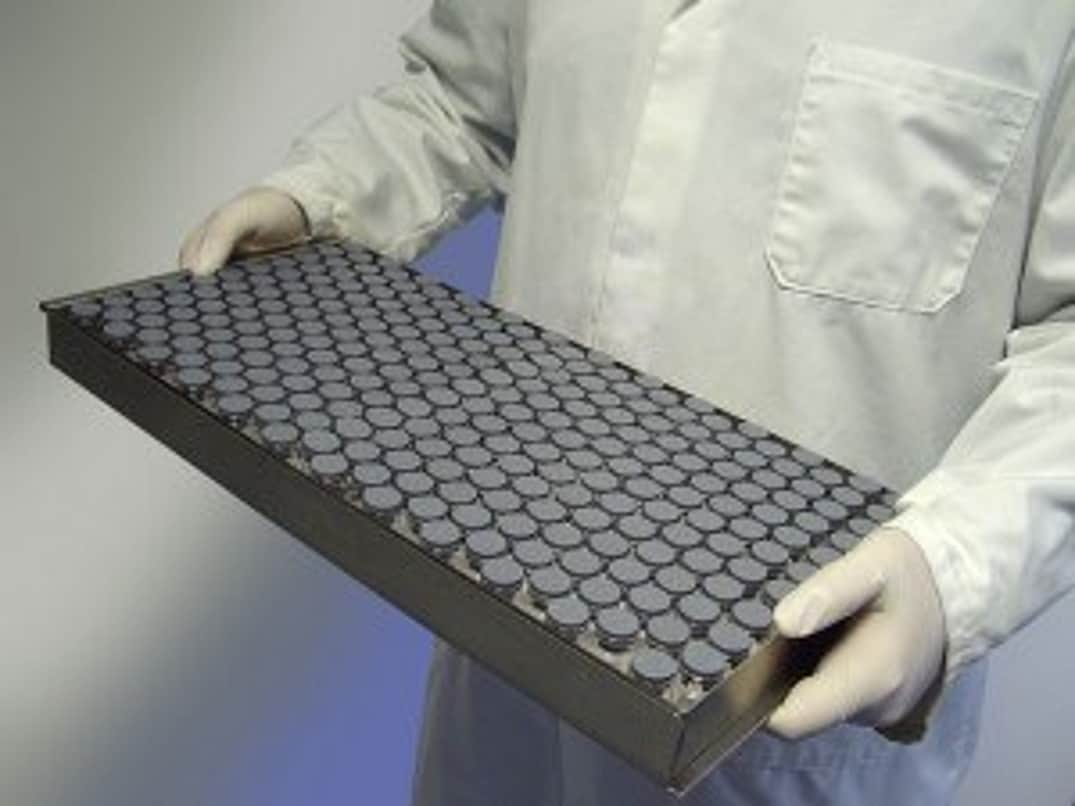“I need a special freeze dry stopper shape”
Unlikely. Stoppers to be used with vials for freeze-dry applications are designed to allow vapour out of the vial whilst the stopper is in a partially inserted position. There are a number of different designs of freeze dry stoppers and these can give one, two or more venting points depending on the design. There is a view in some cases that “the more, the better” but this is not actually the case. As long as there is a vent for the vapour to escape then the number of these is irrelevant. In fact it could be argued that the simpler the design the better, as some of the more complex shapes could have moisture traps that would retain moisture that could end up degrading the product once the vial is closed.
Common designs are ‘Igloo’ (single vent), ‘two-leg’ (two vent points), and cruciform (four vent-points), although some have even more.
“I can’t use a rubber stopper because someone might be latex-intolerant”
Almost without exception (and do check!) pharmaceutical rubber lyo (lyophilisation) stoppers are made from synthetic rubber. Latex is used to make rubber products that are commonly produced by dipping a shape into liquid latex (gloves and condoms for example). Rubber stoppers are not made that way. Historically dry natural rubber was used for some stopper production, but again this is quite different to latex and is not a common practice now.
“I’ve used these stoppers for an initial trial; I can now remove them from the vial and re-use them to save costs.”
With the increasing importance being placed on sustainability in the pharmaceutical industry, re-using stoppers seems like a good idea, but this is not recommended. Re-sterilising stoppers (if this has been done) could affect the functional characteristics of the rubber. Also, the additional processing would lead to a loss of lubricant applied to the stoppers to aid machinability (dependent of the lubricant on each stopper being used). This loss of lubricity could lead to the stopper being more difficult to push home in the freeze dryer. This added increase in difficulty multiplied by the number of stoppers in your freeze dry batch could mean the stoppers are not fully inserted during the compression stage of the freeze dry cycle, due to the cumulative increase in pressure required to push home the stopper.
“These stoppers are sticking to the compression plate in the freeze dryer when the plate lifts after the cycle.”
There are many contributing factors as to why the stoppers could be sticking to the compression plate, but over-compressing the stopper with the compression plate is seen to be the more common cause of ‘sticking’ stoppers.
Stopper manufacturers have tried to mitigate the issue by implementing raised features on the top of the stoppers to reduce the chance of sticking between the stopper and the plate. Pharmaceutical stoppers also all have some form of lubricant on them (Silicone, B2 cross-linked silicone, Flurotec® and other proprietary coatings) to aid machinability. Amongst other things, these can reduce the likelihood of the stoppers sticking to the compression plate.
Flurotec® stoppers feature a cross-linked lamination which provides exceptional lubricity, as well as hydrophobic and inert properties.
“I have a new project to work on so I nipped down to the stores and found these freeze dry stoppers on the shelf that have been there for ages. They will be alright to work with.”
Rubber stoppers contain small amounts of moisture which give them their elastic qualities and the time that stoppers continue to maintain their characteristics is directly related to age, storage conditions such as temperature and exposure to light, oxygen and ozone.
It is recommended to store stoppers in ambient temperatures not exposed to extremes of heat and light and ideally in the original sealed shipping carton. Using stoppers after their recommended shelf life could cause difficulties during the insertion phase of the stopper as the stopper gets harder after time.
Adelphi offers a free consultative service.
Contact our friendly and experienced team to discuss your project in more detail.
Contact us